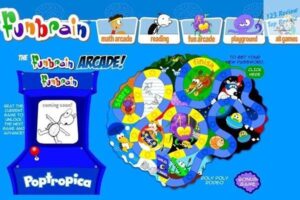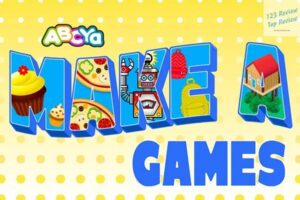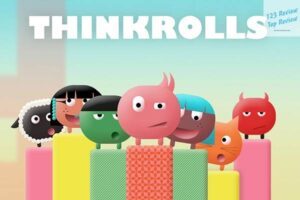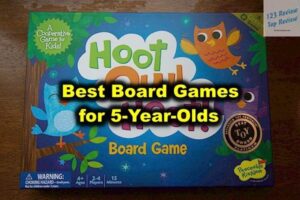By utilizing interactive pieces and a tablet, Osmo Games offers a hands-on approach to developing skills in subjects like math, spelling, coding, and creativity.
In this article, 123 Review highlights the platform’s unique approach to making learning fun and engaging for children, emphasizing how it fosters critical thinking, problem-solving, and collaboration in an interactive, screen-time-friendly environment. Ideal for parents, educators, and tech enthusiasts, this piece showcases how Osmo Games is transforming the educational landscape.
Overview of Osmo Games
What Are Osmo Games?
Osmo Games represent a groundbreaking approach to educational technology, seamlessly blending physical interaction with digital learning to create an immersive, hands-on experience. Launched by Tangible Play Inc., Osmo uses a reflective AI system that turns an iPad or Fire tablet into an interactive learning hub. By incorporating real-world objects like letter tiles, number pieces, and drawing tools, Osmo allows children to engage in a variety of educational activities that are both fun and instructive. This fusion of tangible play and digital interaction is what sets Osmo apart, making it a preferred choice for parents and educators looking to enhance children’s learning through play.
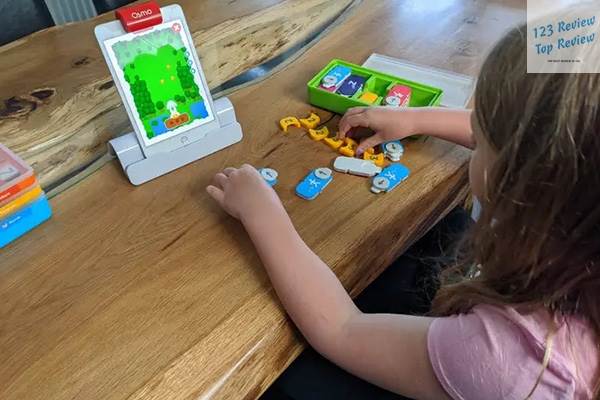
Osmo’s games are designed to cover a broad spectrum of subjects, including literacy, mathematics, coding, and creativity. Each game uses physical pieces that children manipulate in the real world, which are then recognized by the tablet’s camera and integrated into the game. This innovative approach not only keeps children engaged but also helps reinforce the connection between the physical and digital worlds, making abstract concepts more concrete and understandable.
Key Features of Osmo Games
Osmo Games come equipped with a host of features that distinguish them from other educational tools on the market:
- Interactive Play: At the core of Osmo’s design is its interactive play model. The system uses a specially designed reflective mirror that attaches to the tablet’s camera, allowing the device to recognize and respond to the physical pieces placed in front of it. This setup creates a dynamic interaction where children see the immediate results of their actions on the screen, fostering a more engaging learning experience.
- Adaptive Learning: One of Osmo’s standout features is its adaptive learning capability. The games automatically adjust their difficulty level based on the child’s performance. For instance, if a child excels in a particular area, the game will introduce more challenging tasks to keep them stimulated. Conversely, if a child struggles, the game offers more foundational tasks to help them build the necessary skills. This personalized approach ensures that each child progresses at their own pace, making the learning experience more effective.
- Multi-Sensory Engagement: Osmo’s games are designed to engage multiple senses, incorporating visual, auditory, and tactile elements into the learning process. This multi-sensory approach helps reinforce learning by allowing children to experience concepts in various ways. For example, a child might physically manipulate number tiles while hearing the corresponding numbers spoken aloud and seeing them represented on the screen.
- Collaborative Learning: Osmo also supports collaborative play, making it an excellent tool for group learning environments. Many of the games encourage multiple players to participate, fostering teamwork and communication skills. This feature is particularly beneficial in classroom settings or for families with multiple children, as it promotes social interaction and collective problem-solving.
Target Age Groups for Osmo Games
Osmo Games are designed to cater to a broad age range, typically targeting children from ages 3 to 12. Each game is tailored to meet the developmental needs of different age groups, ensuring that the content is both age-appropriate and challenging.
- Preschool (Ages 3-5): For the youngest users, Osmo offers games that focus on foundational skills such as letter recognition, counting, shapes, and colors. These games are designed to be simple yet engaging, helping preschoolers develop fine motor skills, hand-eye coordination, and basic cognitive abilities.
- Early Elementary (Ages 5-8): As children progress into early elementary school, Osmo’s games shift to more complex topics like early literacy, basic arithmetic, and problem-solving. These games are designed to build on the skills developed in preschool, introducing new concepts in a fun and interactive way that keeps children engaged.
- Upper Elementary (Ages 8-12): For older children, Osmo offers games that tackle more advanced subjects such as coding, creative design, and higher-level math. These games are designed to challenge children and encourage them to think critically and creatively, laying a strong foundation for future academic success.
Educational Value of Osmo Games
Learning Outcomes from Different Osmo Games
Osmo Games are meticulously crafted to deliver specific educational outcomes, ensuring that children gain valuable skills across various domains:
- Cognitive Development: Games like Osmo Tangram are designed to enhance spatial reasoning, pattern recognition, and critical thinking. By challenging children to arrange shapes into specific patterns, these games develop problem-solving skills and boost cognitive flexibility, which are crucial for academic success.
- Literacy Skills: Osmo Words and Osmo Reading Adventure are focused on improving literacy by helping children develop their vocabulary, phonics, and reading comprehension skills. These games use interactive word puzzles and storytelling to make learning to read an enjoyable and rewarding experience. By physically manipulating letter tiles to form words, children reinforce their understanding of spelling and word construction, which are essential components of early literacy.
- Mathematical Proficiency: Osmo Numbers and the Math Wizard series are designed to build a strong foundation in mathematics. These games cover basic arithmetic, number sense, and logical reasoning through engaging challenges that adjust in difficulty based on the child’s progress. By visualizing mathematical concepts and solving problems interactively, children can develop a deeper understanding of numbers and operations, making math less intimidating and more approachable.
- Creative Expression: Games like Osmo Masterpiece and Osmo Monster encourage artistic creativity and imaginative play. In Osmo Masterpiece, children can trace images on the screen using a physical pen, helping them develop fine motor skills and an understanding of proportions. Osmo Monster, on the other hand, allows children to bring their drawings to life by integrating them into animated stories. These games foster creative thinking and artistic expression, helping children build confidence in their creative abilities.
Review of Specific Osmo Learning Kits
Osmo offers a variety of learning kits, each designed to cater to different educational needs and age groups:
- Osmo Genius Starter Kit: The Genius Starter Kit is one of Osmo’s most popular offerings, providing a comprehensive introduction to the Osmo platform. This kit includes five games that cover a range of subjects, including math (Osmo Numbers), spelling (Osmo Words), and problem-solving (Osmo Tangram). The Genius Starter Kit is suitable for children aged 6-10 and is designed to support their academic growth through interactive and engaging activities.
- Osmo Little Genius Starter Kit: Specifically designed for preschoolers aged 3-5, the Little Genius Starter Kit focuses on early learning fundamentals. It includes games like Osmo ABCs, which helps children learn letter recognition and phonics, and Osmo Squiggle Magic, which encourages creativity and fine motor skills. This kit is ideal for parents looking to give their young children a head start in their education.
- Osmo Creative Kit: The Creative Kit is tailored for children who enjoy drawing and storytelling. It includes games like Osmo Monster, where children’s drawings are integrated into animated stories, and Osmo Masterpiece, which helps them learn to draw by tracing images on the screen. This kit is perfect for children aged 5-10 who have a passion for art and creativity.
- Osmo Math Wizard Series: The Math Wizard series is a newer addition to the Osmo lineup, specifically designed to make math more accessible and fun. The series includes multiple games, each focusing on different mathematical concepts, such as addition, subtraction, and measurement. The games are presented as interactive adventures, making math feel like an exciting journey rather than a chore.
Comparison of Osmo Games with Traditional Learning Methods
When compared to traditional learning methods, Osmo Games offer a more dynamic and interactive approach to education. Traditional methods often rely heavily on passive learning techniques, such as lectures, worksheets, and rote memorization. While these methods can be effective, they may not engage all learners, particularly those who benefit from hands-on, experiential learning.
Osmo Games, on the other hand, provide a play-based learning experience that encourages active participation. By integrating physical objects with digital content, Osmo makes abstract concepts more tangible and easier to understand. For example, a child learning addition might struggle with the concept on paper, but when they can physically manipulate number tiles and see the results on the screen, the concept becomes clearer and more intuitive.
Additionally, the adaptive learning technology used in Osmo Games ensures that children are always challenged at the right level. Traditional methods often fail to account for individual differences in learning pace, which can lead to frustration or boredom. Osmo’s ability to tailor the difficulty of its games to the child’s progress helps prevent these issues, providing a more personalized and effective learning experience.
Game Categories within Osmo
Osmo Coding Games
Osmo offers a range of coding games designed to introduce children to the fundamentals of programming in a fun and accessible way. These games are particularly valuable for developing logical thinking, sequencing skills, and problem-solving abilities.
- Osmo Coding Awbie: Coding Awbie is the first in Osmo’s series of coding games and serves as an introduction to basic coding concepts. The game uses physical coding blocks that children arrange to guide the character Awbie through a series of challenges. Each block represents a different command, such as moving forward or turning, and children must sequence these commands correctly to solve puzzles. This hands-on approach to coding helps children understand the logic behind programming and develop the skills needed for more advanced coding tasks.
- Osmo Coding Jam: Building on the skills learned in Coding Awbie, Coding Jam introduces more complex coding concepts through music creation. In this game, children use coding blocks to create musical sequences, learning about loops, patterns, and conditional statements in the process. Coding Jam not only teaches coding but also fosters creativity by allowing children to compose their own music tracks.
- Osmo Coding Duo: Coding Duo is the most advanced game in the Osmo coding series, designed for children who have mastered the basics and are ready for more complex challenges. The game requires players to use two characters, each with different abilities, to solve puzzles. This introduces the concept of parallel programming and encourages strategic thinking as children must plan how to use each character’s skills effectively.
Osmo Reading and Literacy Games
Osmo’s reading and literacy games are designed to make learning to read an enjoyable and interactive process. These games focus on letter recognition, phonics, vocabulary building, and reading comprehension, helping children develop strong literacy skills from an early age.
- Osmo Words: Osmo Words is a classic word game that helps children improve their spelling and vocabulary. The game uses physical letter tiles that children arrange to match the words displayed on the screen. As they progress, the words become more challenging, helping children expand their vocabulary and improve their spelling accuracy. The game also offers a multiplayer mode, where children can compete to form words, making it a fun and educational activity for siblings or classmates.
- Osmo Reading Adventure: Osmo Reading Adventure takes children on a journey through various stories, helping them develop reading comprehension skills. The game uses a combination of physical books and digital content, where children can interact with the characters and make choices that affect the story’s outcome. This interactive approach to reading helps children stay engaged and encourages them to think critically about the story’s events.
- Osmo ABCs: Part of the Little Genius Starter Kit, Osmo ABCs is designed for preschoolers who are just beginning to learn the alphabet. The game uses squishy letter pieces that children arrange to match the letters displayed on the screen. As they play, they learn letter names and sounds, laying the foundation for early reading skills.
Osmo Math and Problem-Solving Games
Osmo offers a variety of math and problem-solving games that help children develop a strong foundation in mathematics while making learning fun and interactive.
- Osmo Numbers: Osmo Numbers is a math game that helps children build number sense and learn basic arithmetic. The game uses physical number tiles that children arrange to create equations or match the numbers displayed on the screen. The challenges increase in difficulty as the child progresses, covering addition, subtraction, multiplication, and division. The visual and tactile elements of the game help children understand mathematical concepts more deeply, making math less abstract and more accessible.
- Osmo Math Wizard Series: The Math Wizard series includes several games, each focusing on a different mathematical concept. For example, Math Wizard and the Magical Workshop teaches addition and subtraction through a potion-making adventure, while Math Wizard and the Secrets of the Dragons covers measurement and geometry. Each game in the series presents math as a fun and exciting adventure, helping children develop a positive attitude towards the subject.
- Osmo Tangram: Tangram is a classic puzzle game that challenges children to arrange geometric shapes into specific patterns. While not strictly a math game, Tangram helps develop spatial reasoning and problem-solving skills, which are essential components of mathematical thinking. The game starts with simple puzzles and gradually introduces more complex patterns, helping children build their confidence and skills over time.
Osmo Creative and Drawing Games
Osmo’s creative and drawing games are designed to foster artistic expression and imaginative play, helping children develop their creativity and fine motor skills.
- Osmo Masterpiece: Osmo Masterpiece is a drawing game that helps children learn to draw by tracing images on the screen. The game uses the tablet’s camera to track the child’s drawing in real-time, providing guidance and feedback as they progress. Masterpiece includes a variety of images to trace, from simple shapes to more complex designs, allowing children to improve their drawing skills at their own pace. The game also offers a free draw mode, where children can create their own original artwork.
- Osmo Monster: Osmo Monster is an interactive storytelling game where children’s drawings come to life. In the game, children are asked to draw specific objects or characters, which are then animated on the screen and integrated into a story. This unique approach to storytelling helps children develop their imagination and creative thinking while also reinforcing their drawing skills.
- Osmo Squiggle Magic: Part of the Little Genius Starter Kit, Osmo Squiggle Magic is designed for younger children who are just beginning to explore their creativity. The game uses squishy shapes that children arrange on the screen to create characters and scenes. Once the shapes are arranged, the tablet animates the scene, bringing the child’s creation to life. Squiggle Magic helps children develop fine motor skills and encourages them to think creatively.
User Experience and Engagement
Interaction Quality with Osmo Games
The interaction quality with Osmo Games is one of the key factors that contribute to their success as educational tools. Osmo’s unique blend of physical and digital interaction creates an immersive learning experience that keeps children engaged and motivated to learn.
The games are designed to be intuitive and easy to use, allowing children to jump right in without needing extensive instructions. The physical pieces are sturdy and well-designed, making them easy for small hands to manipulate. The tablet’s reflective camera accurately tracks the child’s actions, providing real-time feedback and ensuring that the physical and digital elements work together seamlessly.
One of the standout features of Osmo Games is their ability to adapt to the child’s learning pace. The games automatically adjust their difficulty based on the child’s performance, ensuring that they are always challenged at the right level. This adaptive learning approach helps keep children motivated and prevents frustration, as the games are neither too easy nor too difficult.
Physical and Digital Integration
Osmo’s integration of physical and digital elements is what sets it apart from other educational platforms. The system uses a reflective mirror that attaches to the tablet’s camera, allowing the device to recognize and respond to the physical pieces placed in front of it. This integration creates a seamless interaction between the physical and digital worlds, making the learning experience more engaging and effective.
The physical pieces used in Osmo Games are not just props; they are integral to the gameplay. For example, in Osmo Numbers, children physically arrange number tiles to create equations, which are then recognized by the tablet and integrated into the game. This hands-on approach helps children understand abstract concepts by allowing them to manipulate real objects and see the results of their actions on the screen.
This physical-digital integration also helps children develop fine motor skills and hand-eye coordination, as they must accurately place the pieces in front of the tablet to achieve the desired results. Additionally, the tactile nature of the games makes learning more interactive and enjoyable, which can lead to better retention and understanding of the material.
Feedback from Parents and Children
Feedback from parents and children who use Osmo Games has been overwhelmingly positive. Parents appreciate the educational value that Osmo brings, often noting that the games make learning fun and engaging for their children. Many parents have reported that their children are more motivated to learn when using Osmo, as the games feel more like play than traditional educational activities.
Children, on the other hand, love the interactive and immersive nature of the games. They enjoy the combination of physical play with digital interaction and often do not even realize they are learning while playing. The adaptive difficulty of the games keeps children challenged and engaged, preventing them from getting bored or frustrated.
Educators have also praised Osmo for its effectiveness in the classroom. The games are easy to set up and use, making them a valuable tool for group learning activities. Teachers have noted that Osmo Games help reinforce concepts taught in class and provide an interactive way for students to practice their skills.
Pricing and Accessibility
Cost of Osmo Games and Kits
Osmo Games are available in various kits, each priced according to the games and accessories included. The cost of these kits can vary, with starter kits typically ranging from $70 to $100. While this initial investment may seem high, the value offered by Osmo Games justifies the price. The kits are designed to be durable and reusable, making them a long-term investment in your child’s education.
In addition to the starter kits, Osmo also offers individual games and expansion packs that can be purchased separately. These add-ons allow parents to expand their child’s Osmo collection over time, introducing new subjects and challenges as the child grows. The flexibility to add new games and kits makes Osmo a versatile educational platform that can adapt to the changing needs of children as they progress in their learning journey.
Subscription Options for Osmo Games
For families looking for continuous access to new content, Osmo offers subscription services for some of its games. These subscriptions provide access to additional content, new challenges, and updates that keep the games fresh and engaging. The subscription model is particularly appealing for parents who want to ensure that their children have access to the latest educational content without needing to purchase new games outright.
Osmo’s subscription services are generally priced affordably, making them accessible to a wide range of families. The subscriptions can be managed through the Osmo app, allowing parents to easily control and customize the content available to their children. This model ensures that Osmo remains a relevant and valuable educational tool, even as new content and technologies are developed.
Compatibility with Devices
Osmo Games are primarily designed for use with iPads and Fire tablets, and the system is compatible with a wide range of these devices. However, it is important to check compatibility before purchasing, as not all models may be supported. Osmo provides a detailed compatibility guide on its website, making it easy for parents to determine whether their device is suitable for use with Osmo.
For families who already own compatible devices, Osmo offers a cost-effective way to transform those devices into powerful educational tools. The Osmo system is easy to set up and use, requiring only the reflective mirror and the physical game pieces to get started. This simplicity and ease of use make Osmo accessible to families and educators who may not have extensive technical expertise.
Overall Impressions
Pros and Cons of Using Osmo Games
Pros:
- Engaging and Interactive: Osmo Games provide a highly engaging and interactive learning experience that keeps children motivated and interested in learning.
- Adaptive Learning: The games adjust their difficulty based on the child’s progress, ensuring that they are always challenged at the right level.
- Wide Range of Subjects: Osmo offers games that cover a broad spectrum of subjects, including math, literacy, coding, and creativity, making it a versatile educational tool.
- Physical-Digital Integration: The seamless integration of physical pieces with digital content helps reinforce learning and makes abstract concepts more tangible.
- High-Quality Materials: The physical pieces included in Osmo kits are durable and well-designed, making them suitable for long-term use.
Cons:
- Initial Cost: The upfront cost of Osmo kits can be high, which may be a barrier for some families.
- Device Compatibility: Osmo is primarily designed for use with iPads and Fire tablets, which may limit accessibility for families who do not own these devices.
- Limited Availability of Some Games: Some Osmo games and kits may be difficult to find in certain regions, requiring parents to order online.
Recommendations for Different Learning Needs
- For Early Learners: The Osmo Little Genius Starter Kit is ideal for preschoolers who are just beginning their educational journey. It provides a gentle introduction to letters, numbers, and creativity, making learning fun and accessible for young children.
- For STEM Enthusiasts: The Osmo Coding and Math Wizard series are perfect for children who show an interest in STEM subjects. These games introduce coding and mathematical concepts in a playful and engaging way, helping children build a strong foundation in these areas.
- For Creative Minds: The Osmo Creative Kit is an excellent choice for children who love drawing and storytelling. It encourages artistic expression and imaginative play, helping children develop their creativity and fine motor skills.
Final Verdict on Osmo Games Value
Osmo Games offer a unique and highly effective approach to learning that combines the best of both physical and digital worlds. The system’s ability to engage children in interactive, hands-on learning makes it a valuable tool for parents and educators alike. While the initial cost may be a consideration, the long-term educational benefits and the adaptability of the platform make Osmo a worthwhile investment in a child’s education. Whether your child is just starting to learn the alphabet or is ready to tackle more complex subjects like coding and math, Osmo provides the tools and resources needed to support their academic growth and development.
